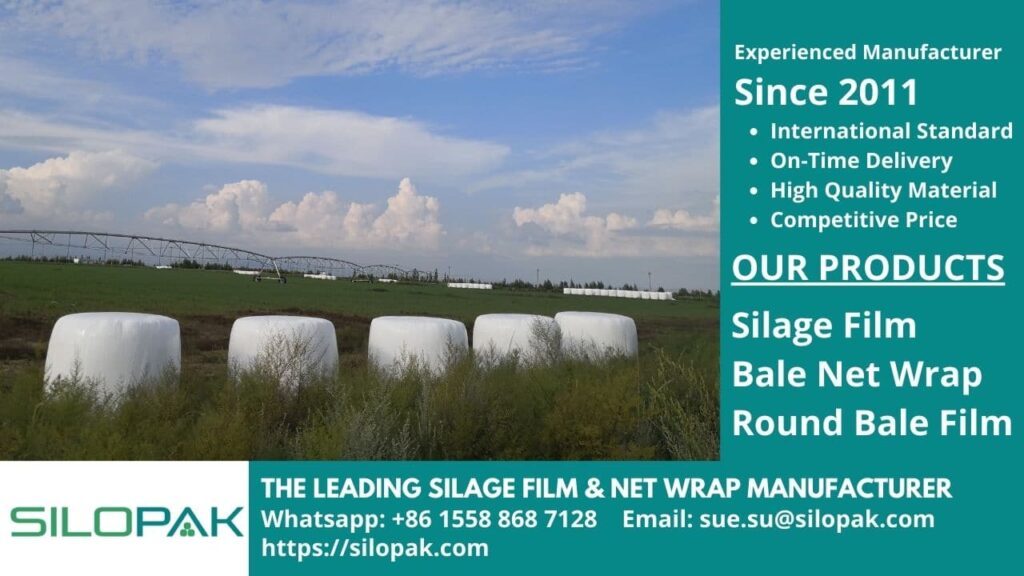
When should silage be cut is one of the most frequently asked questions by breeders. Even though in general, the time for giving fermented feed is during the dry season, proper stock management should be applied so that silage supplies are available until the dry season ends.
Before discussing when silage should be cut, business people in the livestock sector must also know how to make the right silage, choose high-quality silage film, and keep the silage fermentation process running optimally. When the silage is opened, the conditions should be as expected, even supporting the health and endurance of livestock.
To get answers about when silage should be cut, let’s look at the description in this article until it’s finished. You will also get recommendations for the best silage packaging for maximum and long-lasting fermentation results.
contents
Why Should You Make Silage?
Silage is a fermented feed that is preserved so that the food supply for livestock is available in the dry season. Silage is made from various kinds of fresh green grass, which goes through the stages of cutting, compacting, and forming bales to wrapping using silage film so that the feed fermentation process can take place optimally.
Before answering the question “When should silage be cut?”, here are some important reasons for making silage:
Save on Feed Costs in the Dry Season
Medium and large-scale livestock business brings high profits but is also accompanied by high maintenance and feed costs. When green fodder can be obtained for free by grazing livestock on pastures, the dry season makes the supply of livestock very limited, if not none at all.
For this reason, making silage is very important so that the livestock get enough food and you don’t have to pay a lot of money to buy manufactured feed. Making silage must be accompanied by stock management so that the feed supply is sufficient throughout the dry season.
Health and Strengthen Livestock Immunity
The right silage formulation and the correct fermentation process will produce feed that is highly nutritious and contains enzymes that are good for digestion. Various guidelines for making silage can also help you produce silage feed that is highly nutritious and can support livestock’s immune system. Cow dung that gets organic feed can also be used as raw material for biogas or other useful materials.
Optimizing Yields
Piles of straw on agricultural land do not need to be thrown away or burned because the green grass is the raw material for making silage. Likewise, with other crop residues, they can be immediately processed into silage to optimally reduce agricultural waste. Good use of silage film is also very important for fast and effective silage making.
When Should Silage Be Cut and Why
The best time to open the silage is during the dry season. The condition is that the silage has gone through the fermentation and packaging stages for more than three weeks. Wrapping silage in the right way and using the right packaging will make fermented feed last longer for more than 12 months.
Here is some information you should know about when it should silage be cut and why:
Ready-To-Eat Silage Conditions
Good silage should remain green in color and give off a sour smell. Silage that has successfully passed the fermentation stage should not be slimy or moldy and have the texture of intact grass. The process of making and packing devices must be considered to support the success of making silage.
The Right Time to Open Silage
The dry season often difficult to predict when it will start and end. But based on the experience of many breeders, the right time to open silage is in May, June, and July every year. This means that making silage must have been done in the harvest season three months earlier.
Management of Fermented Feed Stock
The right time to open the silage must be adjusted with careful calculations regarding stock management. Several breeders work together to make silage and calculate how many bales must be opened per day to be served to livestock. Some breeders combine the provision of silage with manufactured feed to ensure sufficient silage is available until the dry season ends.
So, when should the silage be cut? You can start when fresh forage is in the meadow or in agricultural areas that are getting scarce. But this must also be accompanied by careful calculations so that your livestock gets sufficient and healthy feed intake throughout the year.
Finally, no short answer to the question, “When should silage be cut?”. Each region has different conditions and weather. Climate change also makes farmers unable to always rely on old traditions to prepare feed in the dry season. Experience and cooperation between farmers in each region are very important to ensure the continuity of a healthy and sustainable livestock business.

